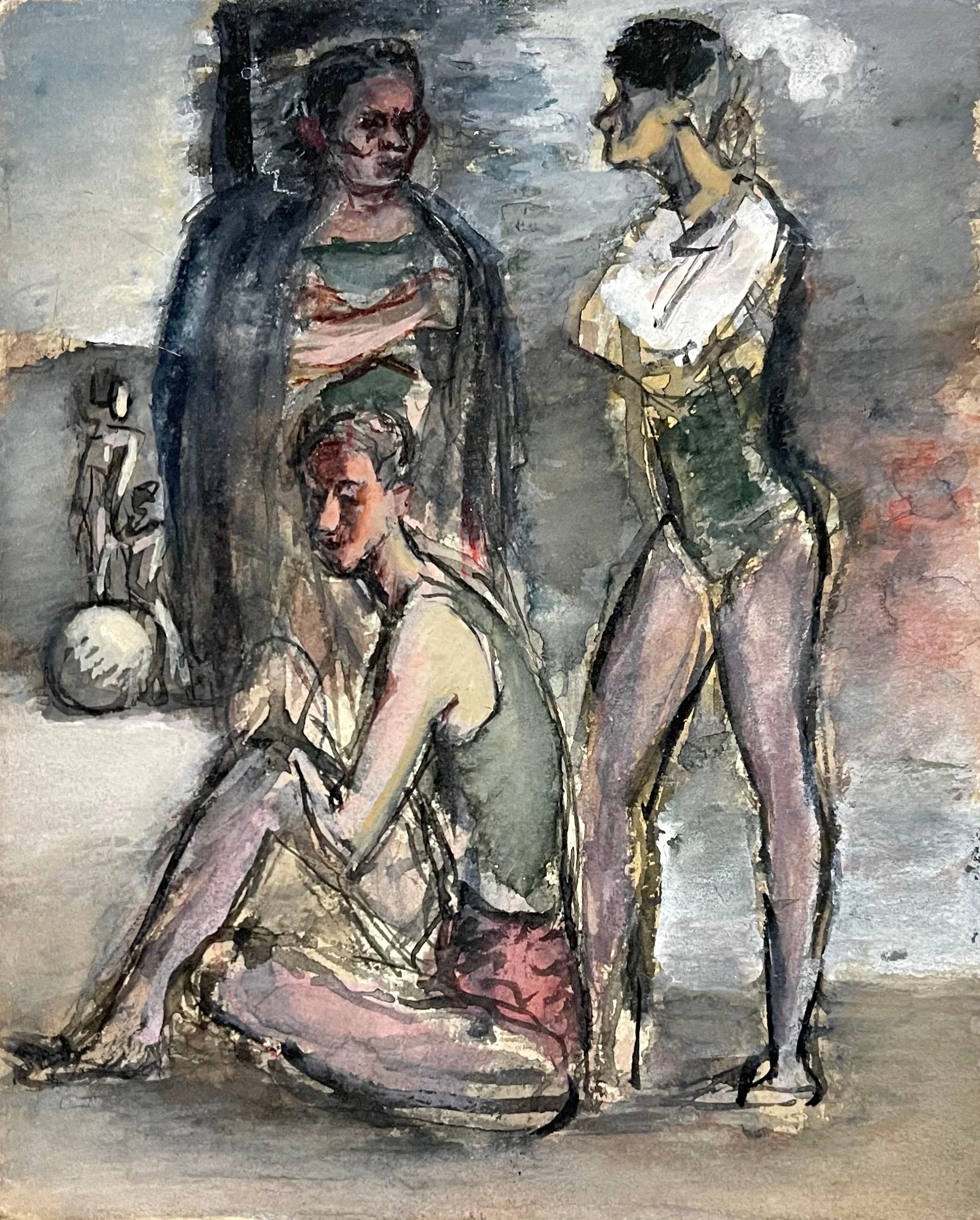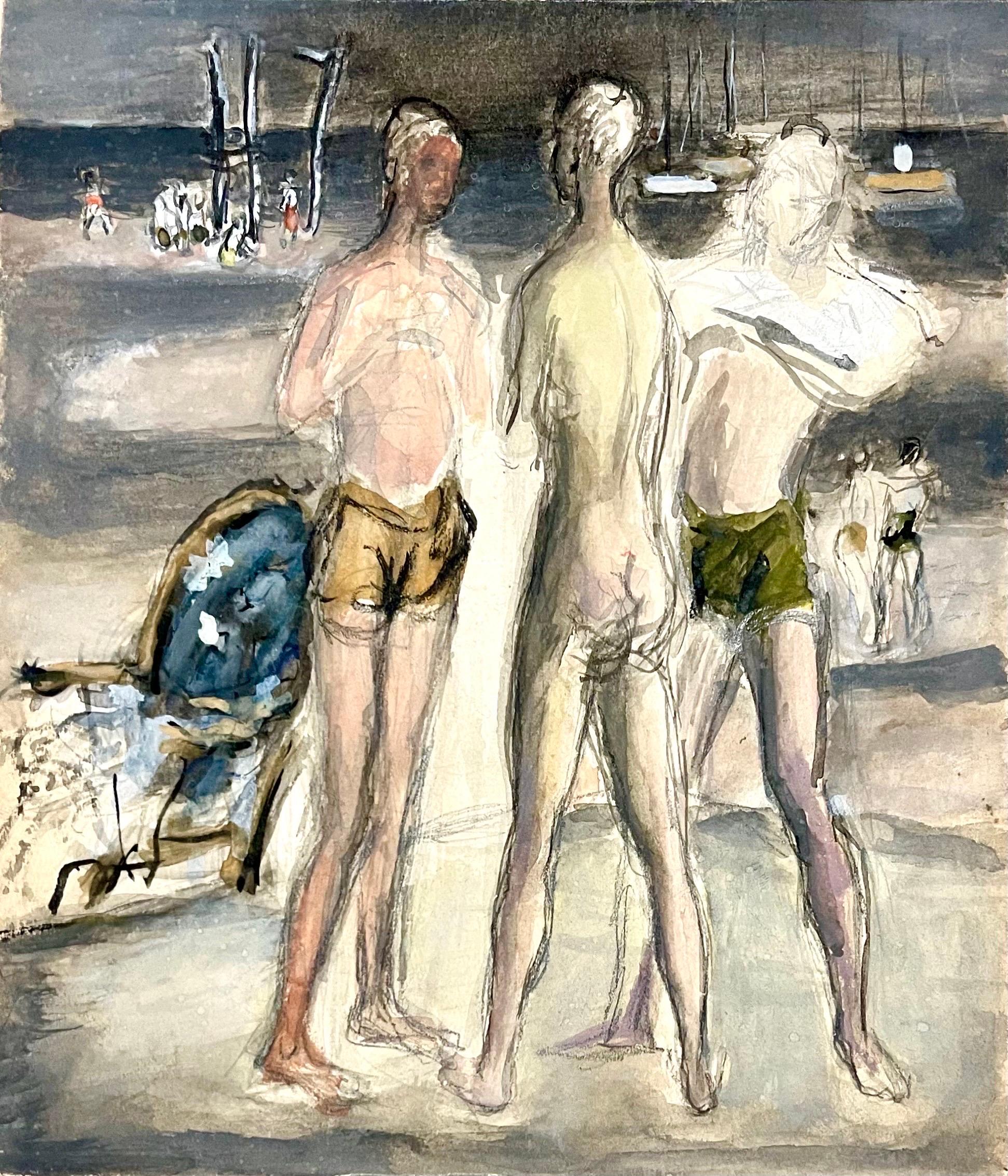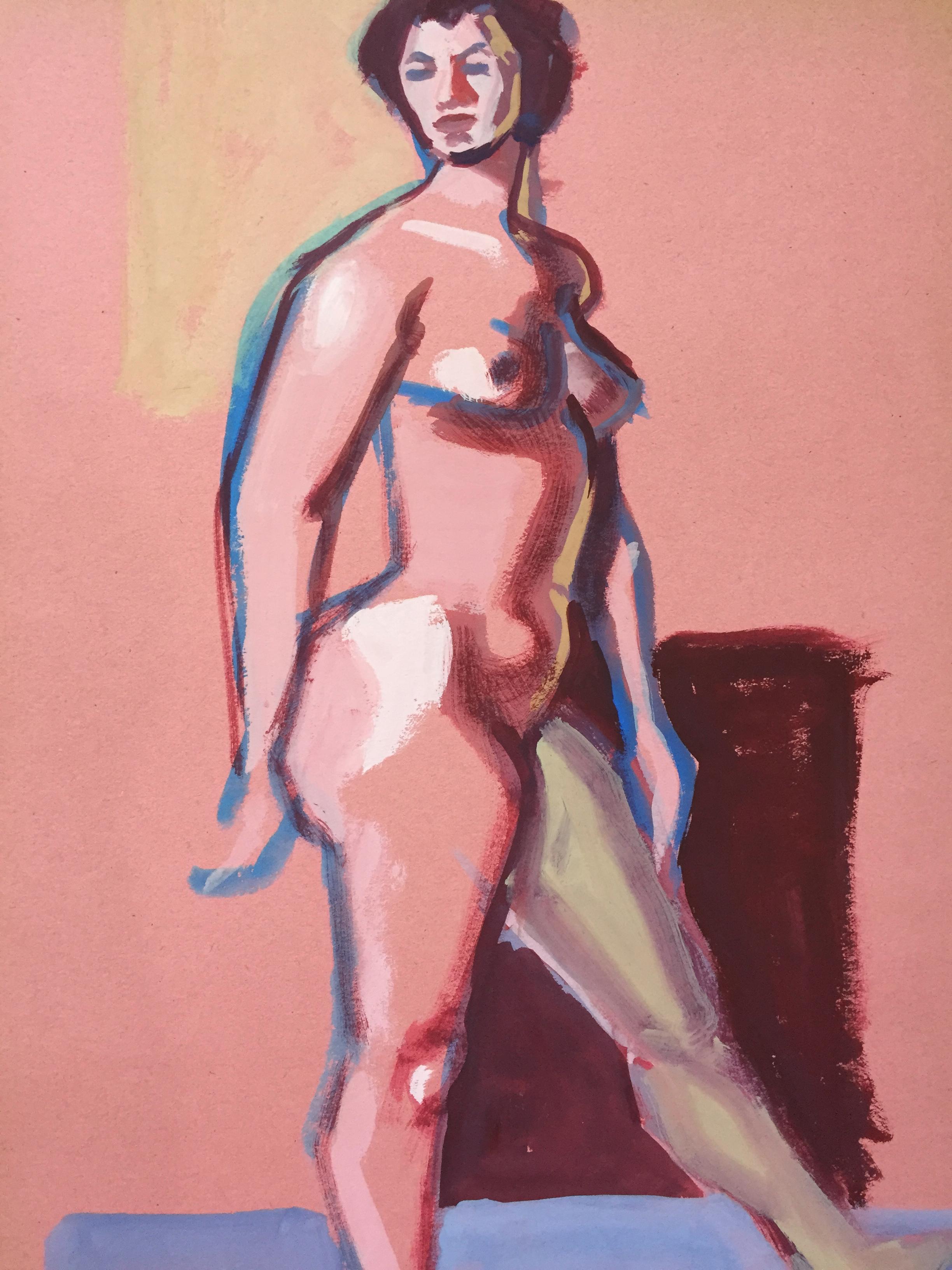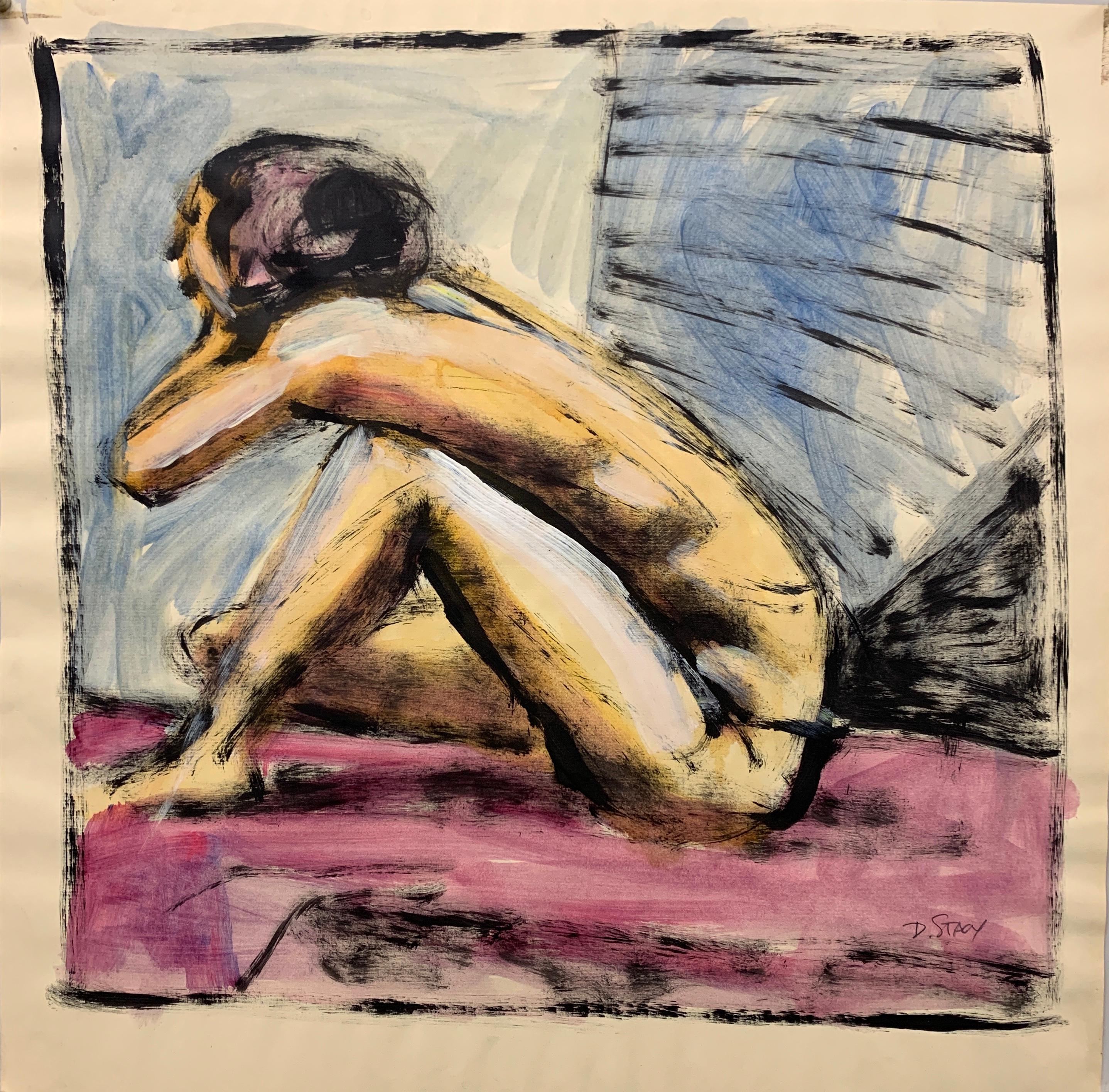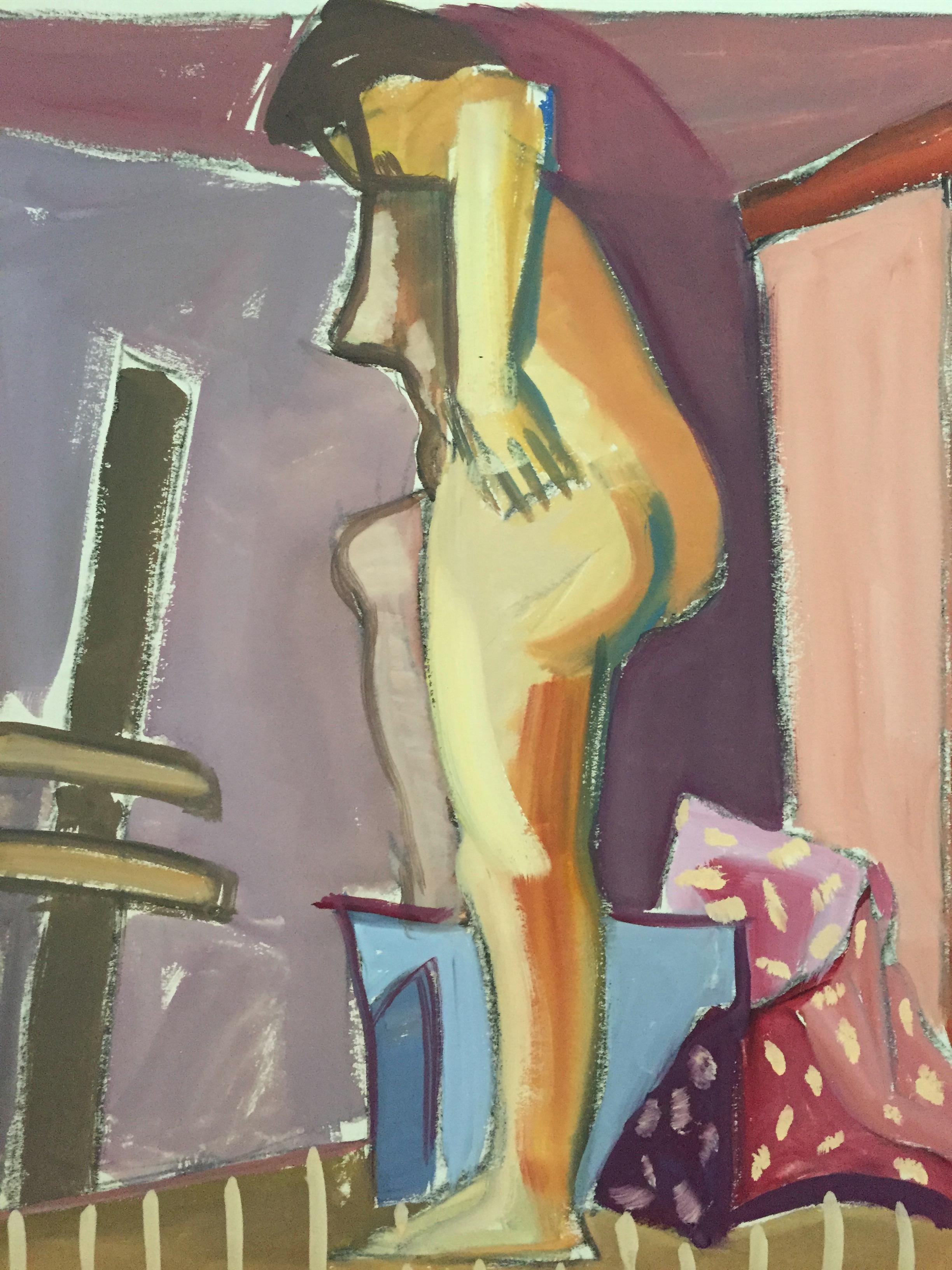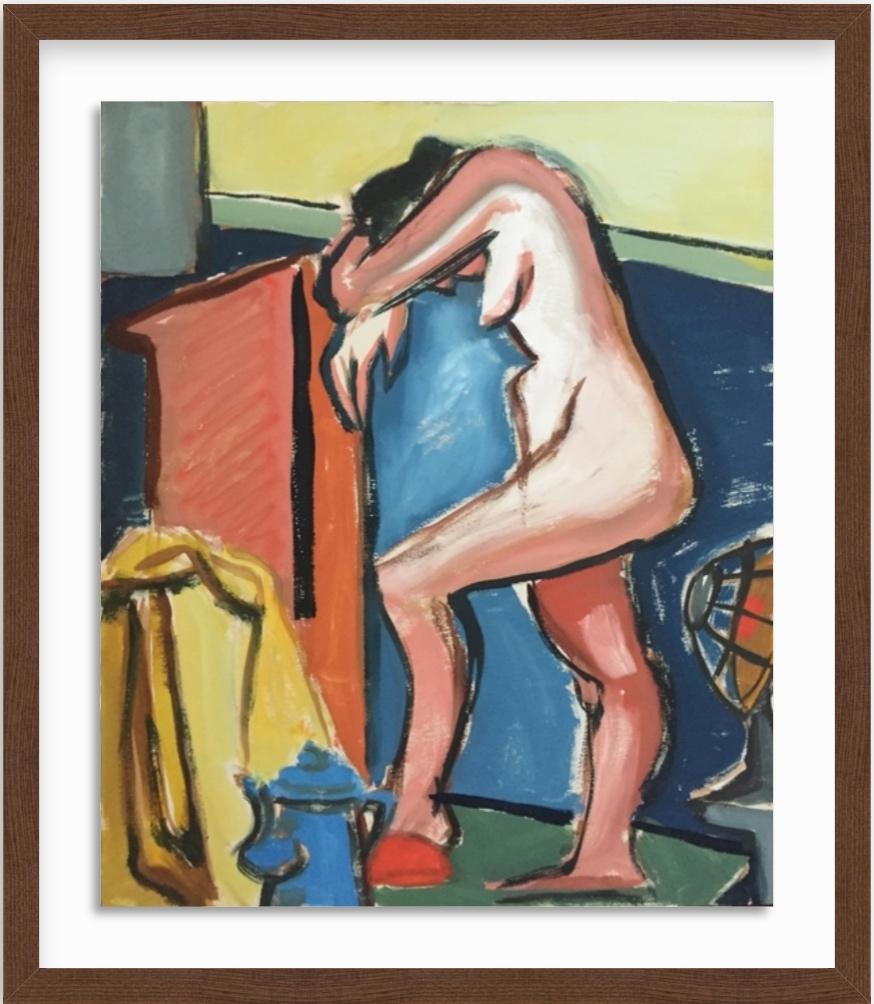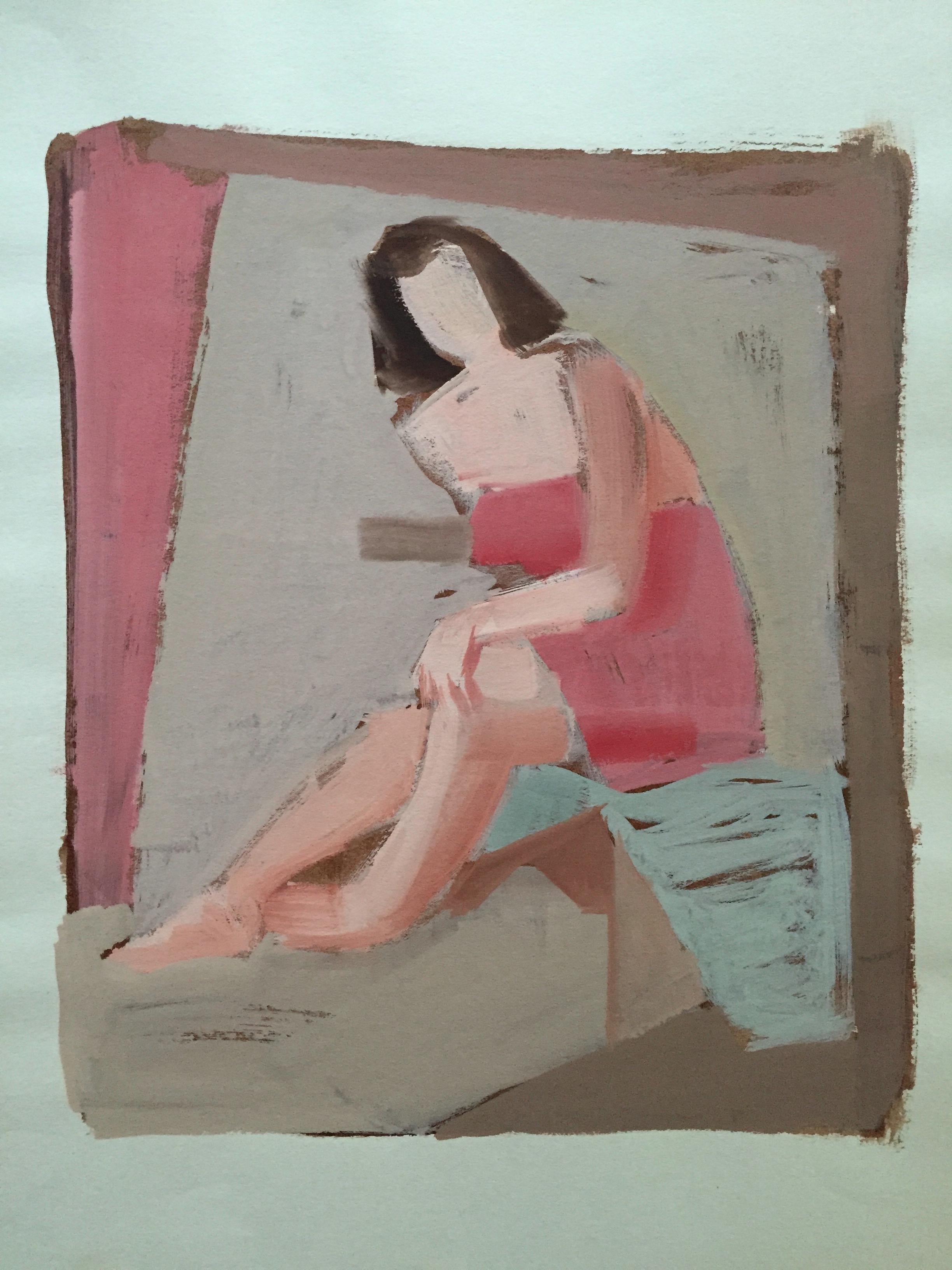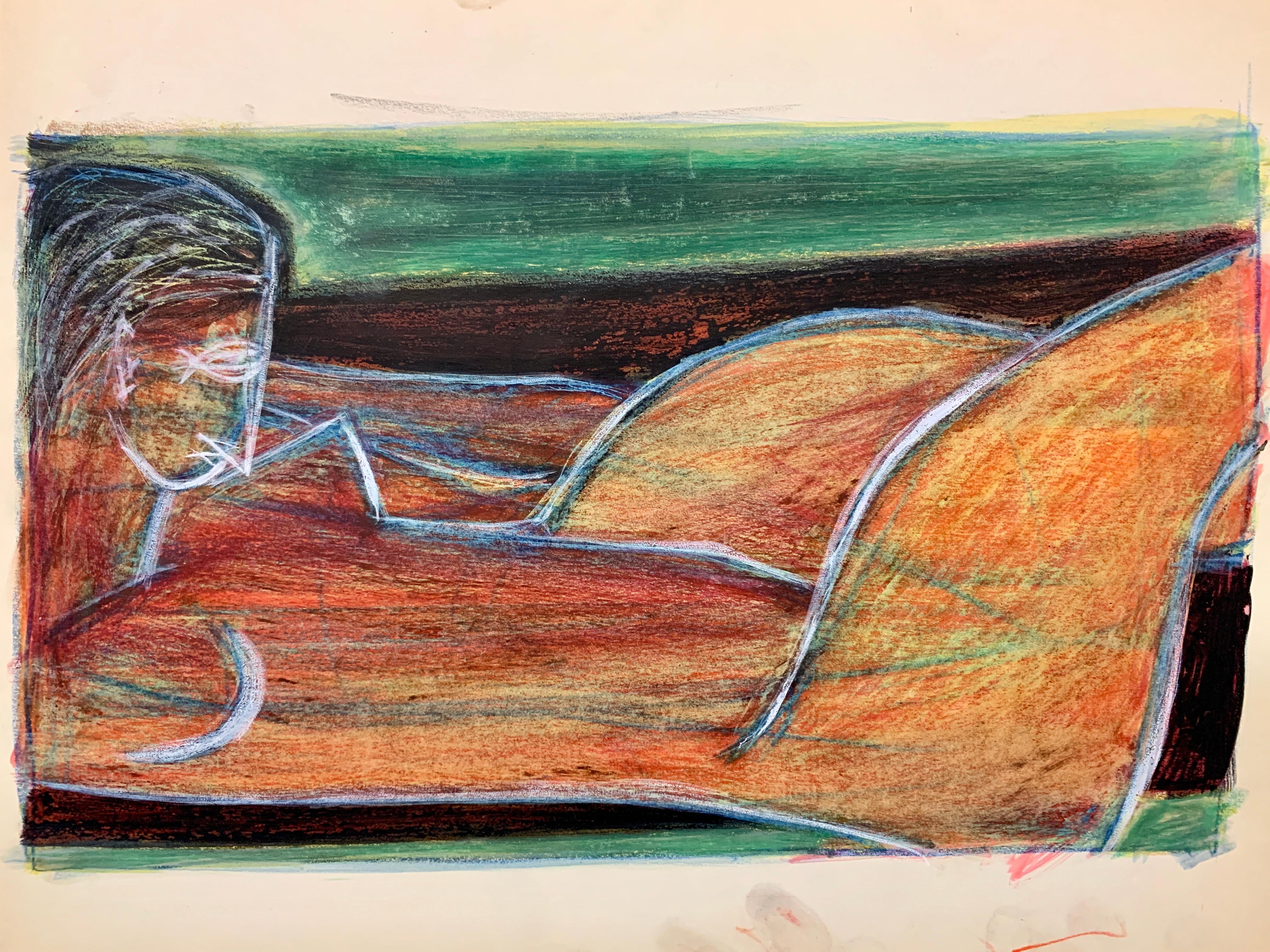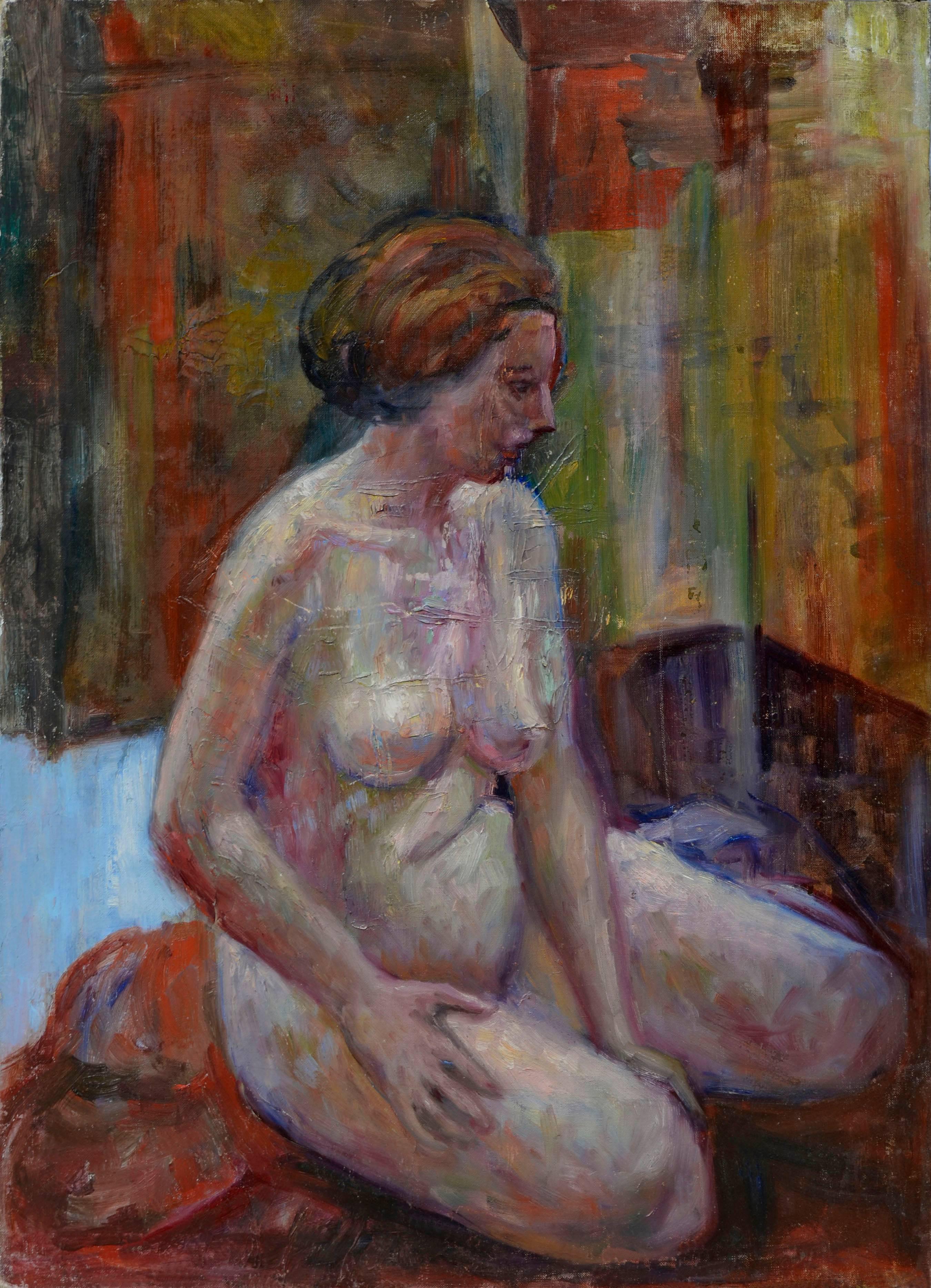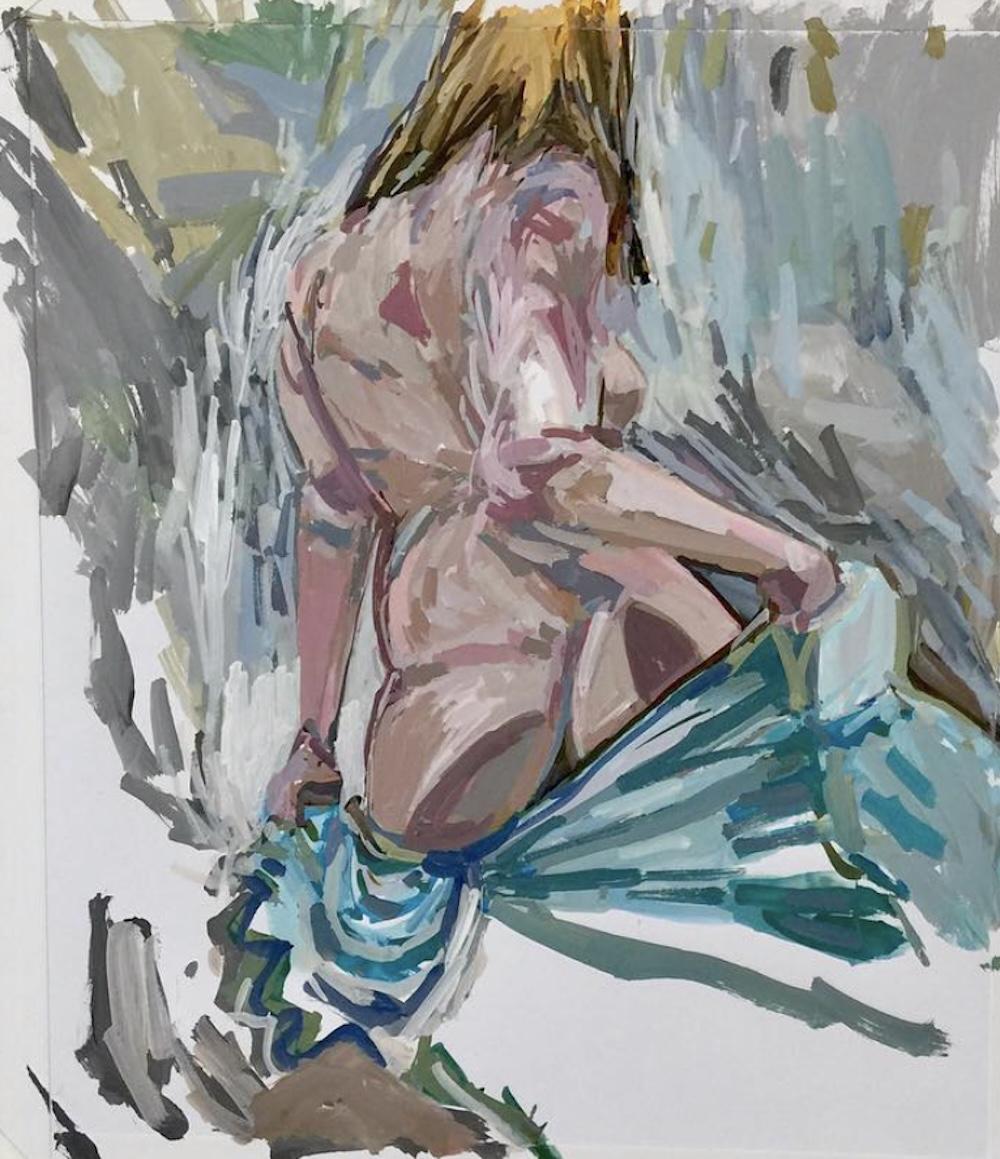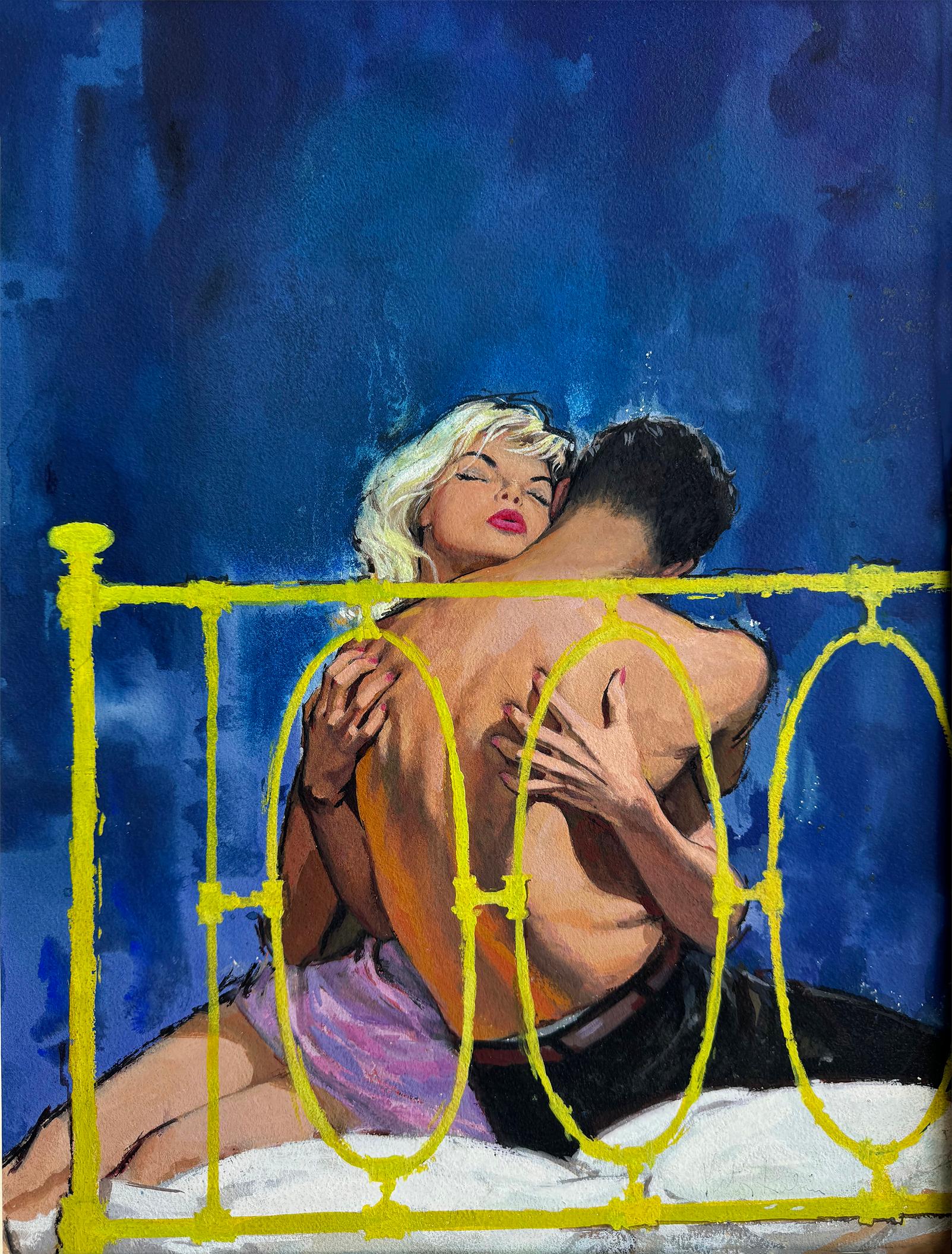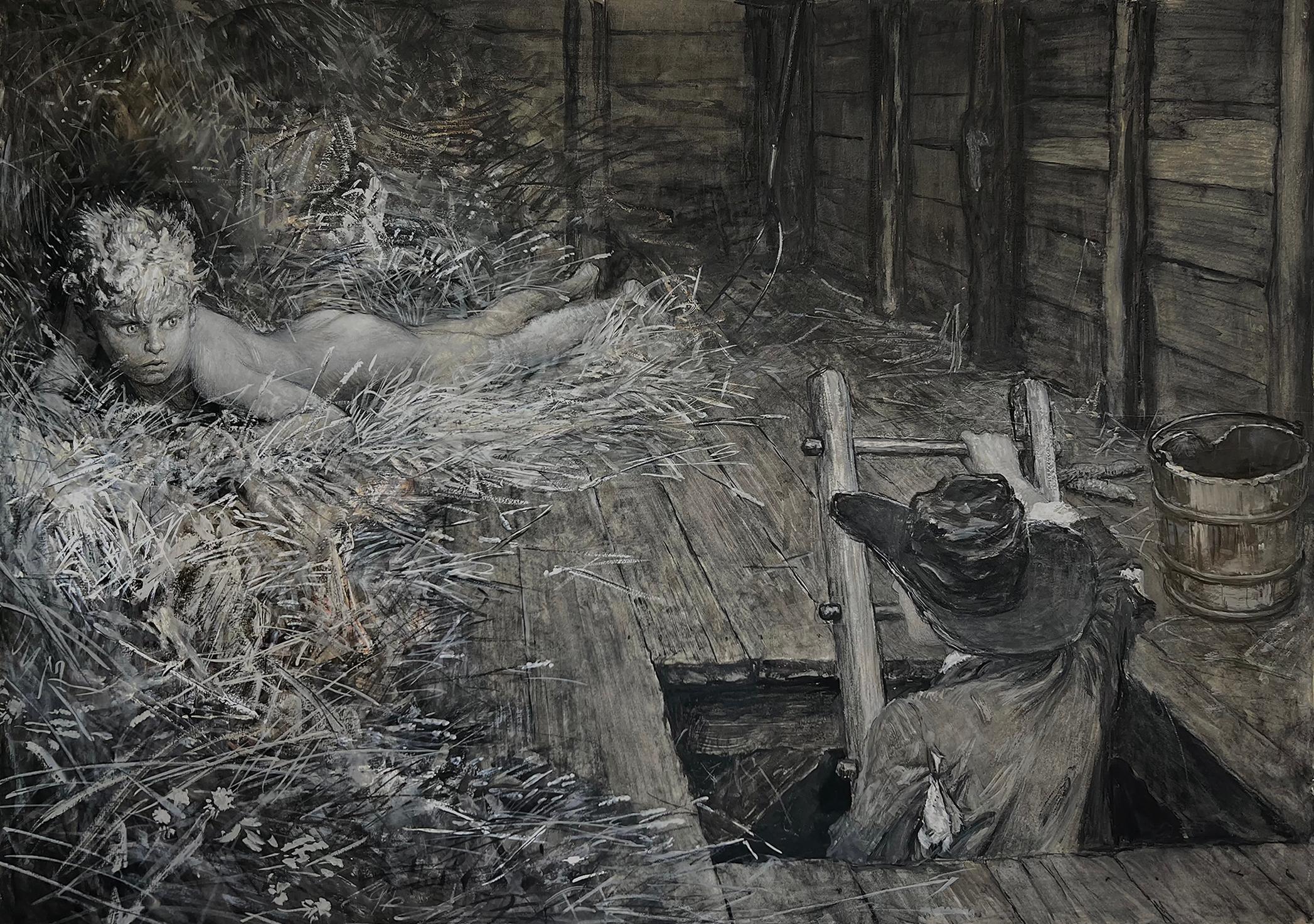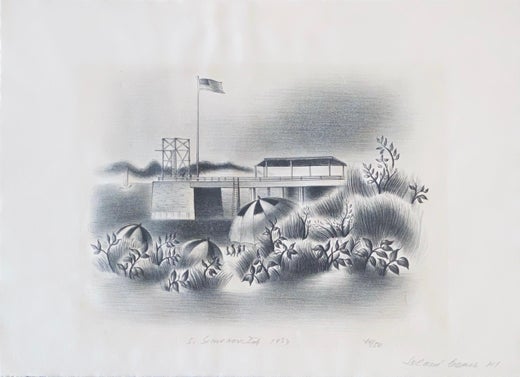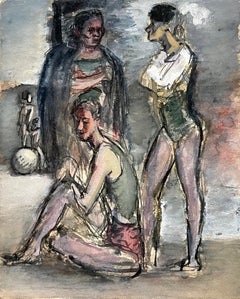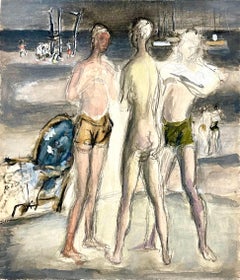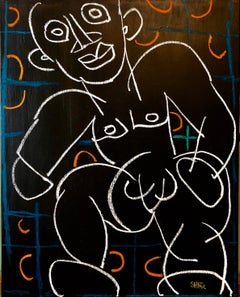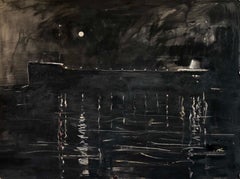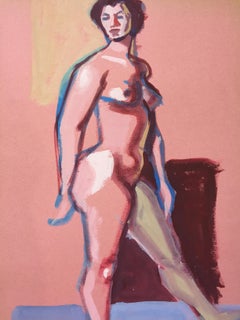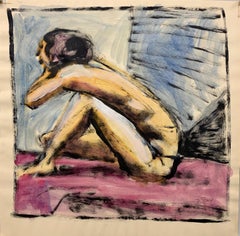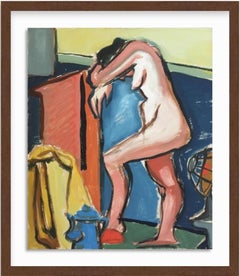
Simka Simkhovitch WPA Artist Painting Gouache American Modernist Beach Scene
View Similar Items
Want more images or videos?
Request additional images or videos from the seller
1 of 5
Simka SimkhovitchSimka Simkhovitch WPA Artist Painting Gouache American Modernist Beach Scenec.1930's
c.1930's
$850List Price
About the Item
- Creator:Simka Simkhovitch (1893 - 1949, Russian, American)
- Creation Year:c.1930's
- Dimensions:Height: 6.5 in (16.51 cm)Width: 5.25 in (13.34 cm)
- Medium:
- Movement & Style:
- Period:
- Condition:good. minor wear. please see photos.
- Gallery Location:Surfside, FL
- Reference Number:1stDibs: LU38210494352
Simka Simkhovitch
Simka Simkhovitch was born near the city of Kiev, Russia. When he was 7, he spent a year in bed with a severe case of measles. To amuse himself he used to sketch an old mill outside his window, and thus decided to become an artist. He studied at an art school in Odessa and was recommended to attend the Imperial Academy of St. Petersburg (a singular honor in Russia at the time) before the war and revolution. Swept up into the army before he could attend, his work was hung in the Museum of Revolution in Leningrad. He resumed his studies in 1914 and graduated four years later. He was sent to the United States in 1924 to do illustrations for Soviet textbooks. He quickly applied for and gained U.S. citizenship. Simkhovitch integrated with the art world immediately and galleries such as Midtown Galleries and Marie Sterner took him on as part of their stable of artists. He also was employed by the WPA and executed major mural commissions throughout the country. One of his largest commissions was the Mississippi Court House. Life magazine profiled him twice with full-length features on his life here in this country as an artist. When he died at an early age, the Whitney Museum of Art in New York offered to do a retrospective and the widow denied the possibility and simply put his works away in storage. Considered a master draftsman and an adherent of certain classicism, Simkhovitch’s compositions are often built up in a complicated but well-managed counterpoint. But at heart, he is a romanticist preferring the dreamy colors of a Russian fairy tale.
About the Seller
4.9
Platinum Seller
Premium sellers with a 4.7+ rating and 24-hour response times
Established in 1995
1stDibs seller since 2014
1,799 sales on 1stDibs
Authenticity Guarantee
In the unlikely event there’s an issue with an item’s authenticity, contact us within 1 year for a full refund. DetailsMoney-Back Guarantee
If your item is not as described, is damaged in transit, or does not arrive, contact us within 7 days for a full refund. Details24-Hour Cancellation
You have a 24-hour grace period in which to reconsider your purchase, with no questions asked.Vetted Professional Sellers
Our world-class sellers must adhere to strict standards for service and quality, maintaining the integrity of our listings.Price-Match Guarantee
If you find that a seller listed the same item for a lower price elsewhere, we’ll match it.Trusted Global Delivery
Our best-in-class carrier network provides specialized shipping options worldwide, including custom delivery.More From This Seller
View AllSimka Simkhovitch WPA Artist Painting Gouache American Modernist Beach Scene
By Simka Simkhovitch
Located in Surfside, FL
Simka Simkhovitch (Russian/American 1893 - 1949)
This came with a small grouping from the artist's family, some were hand signed some were not.
These were studies for larger paintin...
Category
1930s American Modern Nude Paintings
Materials
Gouache, Board
Simka Simkhovitch WPA W/C Painting Gouache American Modernist Beach Scene Nude
By Simka Simkhovitch
Located in Surfside, FL
Simka Simkhovitch (Russian/American 1893 - 1949)
This came with a small grouping from the artist's family, some were hand signed some were not.
These were studies for larger paintin...
Category
1930s American Modern Nude Paintings
Materials
Gouache, Board, Watercolor
Rare Modernist Oil Painting Line Drawing Nude Man Louis Stettner
By Louis Stettner
Located in Surfside, FL
Signed and Dated Modern Line Drawing Oil Painting of Nude Man.
Louis Stettner (November 7, 1922 – October 13, 2016) was an American photographer of the 20th century whose work inclu...
Category
21st Century and Contemporary American Modern Figurative Paintings
Materials
Canvas, Oil
2 Sided Expressionist Detroit Modernist Painting Female Nude, Night Cruise Ship
Located in Surfside, FL
This is a two sided painting. Nude reclining woman and a ship lit at night.
Harold Cohn (1908 - 1982)
Harold Cohn was active/lived in New Jersey, Michigan. Harold Cohn is known fo...
Category
Mid-20th Century Modern Nude Paintings
Materials
Watercolor, Gouache
2 Sided Expressionist Detroit Modernist Painting Female Nude, Night Cruise Ship
Located in Surfside, FL
This is a two sided painting. Nude reclining woman and a ship lit at night.
Harold Cohn (1908 - 1982)
Harold Cohn was active/lived in New Jersey, Michigan. Harold Cohn is known fo...
Category
Mid-20th Century Modern Nude Paintings
Materials
Watercolor, Gouache
French Neo Expressionist Mixed Media Impasto Dancing Painting Alexis Gorodine
Located in Surfside, FL
Alexis Gorodine (French,American, born 1954). A mixed media impasto painting on board Figural work produced in the artist's distinct cave painting inspired Neo Expressionist style de...
Category
21st Century and Contemporary Contemporary Figurative Paintings
Materials
Mixed Media, Paint, Board
You May Also Like
1950s "Pink Lady" Mid Century Gouache Female Nude Painting
Located in Arp, TX
From the estate of Jerry Opper & Ruth Friedman Opper
Pink Lady
c. 1940-1950's
Gouache on Paper
15" x 18", Unframed $1000
*Custom framing available for additional charge. Please expect framing time between 3-5 weeks.
From the estate of Ruth Friedmann Opper & Jerry Opper. Ruth was the daughter of Bauhaus artist, Gustav Friedmann...
Category
Mid-20th Century American Modern Figurative Paintings
Materials
Paper, Gouache
1950s "Pink Floor" Mid Century Female Nude Figurative Painting
By Donald Stacy
Located in Arp, TX
Donald Stacy
"Pink Floor"
c.1950s
Gouache paint on paper
17.25" x 17.25" unframed
Signed in pencil lower right
Came from artist's estate
*Custom framing av...
Category
Mid-20th Century American Modern Figurative Paintings
Materials
Paper, Gouache
1950s "Backside" Mid Century Figurative Nude Gouache Painting
Located in Arp, TX
From the estate of Jerry Opper & Ruth Friedman Opper
Backside
c. 1950's
Gouache on Paper
15" x 18" Unframed
*Custom framing available for additional charge. Please expect framing time between 3-5 weeks.
From the estate of Ruth Friedmann Opper & Jerry Opper. Ruth was the daughter of Bauhaus artist, Gustav Friedmann.
San Francisco Abstract Expression
A free-spirited wave of creative energy swept through the San Francisco art community after World War II. Challenging accepted modes of painting, Abstract Expressionists produced highly experimental works that jolted the public out of its postwar complacency.
Abstract Expressionism resulted from a broad collective impulse rather than the inspiration of a small band of New York artists. Documenting the interchanges between the East and West Coasts, she cites areas of mutual influence and shows the impact of San Francisco on the New York School, including artists such as Mark Rothko and Ad Reinhardt. San Francisco's Beat poets...
Category
Mid-20th Century American Modern Figurative Paintings
Materials
Paper, Gouache
$500 Sale Price
50% Off
1950s "Too Much" Mid Century Nude Gouache Painting
Located in Arp, TX
From the estate of Jerry Opper & Ruth Friedman Opper
Too Much
c. 1940-1950's
Gouache on Paper
15" x 18", framed wood gallery frame float mount 21.5"x19.5"
From the estate of Ruth Friedmann Opper & Jerry Opper. Ruth was the daughter of Bauhaus artist, Gustav Friedmann.
San Francisco Abstract Expression
A free-spirited wave of creative energy swept through the San Francisco art community after World War II. Challenging accepted modes of painting, Abstract Expressionists produced highly experimental works that jolted the public out of its postwar complacency.
Abstract Expressionism resulted from a broad collective impulse rather than the inspiration of a small band of New York artists. Documenting the interchanges between the East and West Coasts, she cites areas of mutual influence and shows the impact of San Francisco on the New York School, including artists such as Mark Rothko and Ad Reinhardt. San Francisco's Beat poets...
Category
Mid-20th Century American Modern Figurative Paintings
Materials
Paper, Gouache
$760 Sale Price
41% Off
1950s "Pink Towel 2" Mid Century Nude Gouache Painting
Located in Arp, TX
From the estate of Jerry Opper & Ruth Friedman Opper
Yellow
c. 1950's
Gouache on Paper
15" x 18", Unframed
*Custom framing available for additional charge. Please expect framing time between 3-5 weeks.
From the estate of Ruth Friedmann Opper & Jerry Opper. Ruth was the daughter of Bauhaus artist, Gustav Friedmann.
San Francisco Abstract Expression
A free-spirited wave of creative energy swept through the San Francisco art community after World War II. Challenging accepted modes of painting, Abstract Expressionists produced highly experimental works that jolted the public out of its postwar complacency.
Abstract Expressionism resulted from a broad collective impulse rather than the inspiration of a small band of New York artists. Documenting the interchanges between the East and West Coasts, she cites areas of mutual influence and shows the impact of San Francisco on the New York School, including artists such as Mark Rothko and Ad Reinhardt. San Francisco's Beat poets...
Category
Mid-20th Century American Modern Figurative Paintings
Materials
Paper, Gouache
1950s "Orange Nude Lounging" Mid Century Figurative Painting Pratt Graphic Arts
By Donald Stacy
Located in Arp, TX
Donald Stacy
"Orange Nude Lounging"
c.1950s
Oil pastel and gouache paint on paper
23" x 20" framed black gallery wood frame float mount
Unsigned
Came from artist's estate
Donald Stacy (1925-2008) New Jersey
Studied: Newark School of Fine Art
The Art Students League
Pratt Graphic Arts Center
University of Paris 1953-54
University of Aix-en-Provence 1954-55
Faculty: Art Department of the New School
Museum of Modern Art
School of Visual Arts
Stacy Studio Workshop
Exhibitions: Grand Central Moderns
George Wittenborn
The New School
Print Exhibitions, Chicago
University of Oklahoma
Honolulu Museum
Monclair Museum
Wisconsin State College
Louisiana Art...
Category
Mid-20th Century American Modern Figurative Paintings
Materials
Paper, Gouache, Oil Pastel
Recently Viewed
View AllMore Ways To Browse
Four Nudes
Nude Beach
Nudes On The Beach
1930s Italian Paintings
Nude Models Large
Men Nude Art
African Art Nude
Russia Nude
American Revolution Painting
Vintage African Nude
Theater Nude
African American Nudes
Small Nude Sculpture
American Work Bench
1930s Magazine Illustration
Nude Love Scenes
Nude Sand
Socialite Painting
